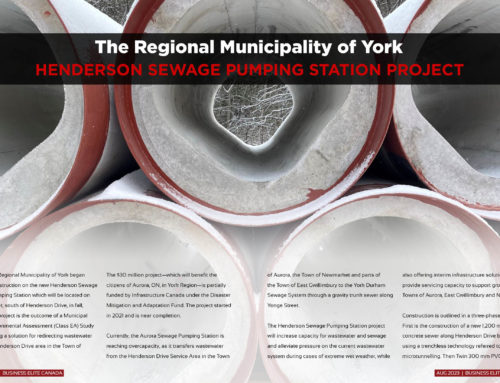Sprawling landscape, and natural beauty as far as the eye can see, Big Lakes County showcases the best of Canadian nature. Located in northern Alberta, the County expands over 13,942 square kilometers of area. With a diverse region characterized by farmland, lush forests, and, of course, big lakes (Lesser Slave Lake, Winagami Lake, and Snipe Lake are the largest lakes lying within the County boundaries); there is no end to wonderful opportunities for camping, fishing, and the quintessential rural Canadian experience.
Servicing a large service area population of 12,731, of which 50 per cent is indigenous, Big Lakes neighbours the Town of High Prairie, Town of Swan Hills, East Prairie Métis Settlement, Gift Lake Métis Settlement, Peavine Métis Settlement, Driftpile First Nation, Kapawe’no First Nation, Sucker Creek First Nation, Whitefish River First Nation, and Swan River First Nation.
While the community is perhaps best known for its splendor, Big Lakes County punches above its weight in terms of green-energy infrastructure. In October 2020, Big Lakes County Council announced that the County Shop Solar Project was producing power, and its Joussard Water Treatment Plant was completed in February, 2020, providing safe, clean, and reliable water sources.
About Big Lakes County
Business Elite Canada spoke with Reeve Ken Matthews (a reeve is an elected chief executive in counties and some district municipalities) to learn more about Big Lakes County and its amenities.
“Big Lakes County is a welcoming and thriving community,” says Matthews. “We are proud of our beautiful lakes, forests, and rolling countryside. We are equally proud of our diverse and talented workforce who’ve helped to expand opportunities in Big Lakes. We have an abundance of natural resources—agriculture, forestry, and oil and gas that continue to grow and strengthen our economy. We’ve also just scratched the surface, exploring opportunities in transportation and logistics, tourism, education, construction, health, retail, and information and communications technology. Possibilities are endless in Big Lakes for those with the vision to help see them grow.”
Big Lakes County has put the preservation of the land at the centre of its vision statement: The Big Lakes County’s mission is ‘Building a Sustainable Municipality.’
“Sustainability is a broad goal, but it includes being mindful of the resources we use—both physical and financial,” says Matthews. “For example, the solar project will offset our electricity use for the office and the Public Works Shop for the next 30 years and will even turn a profit. Looking at ways to be more efficient and improve for our residents is the overall goal.”
County Shop Solar Project
Matthews is refereeing to the County Shop Solar Project. This project was funded in part by the Municipal Climate Change Action Centre (MCCAC), a partnership of the Alberta Urban Municipalities Association (AUMA), and Rural Municipalities of Alberta (RMA). The County was able to access over 41 per cent of the money required through the Alberta Municipal Solar Program, offered through the MCCAC. Other grant funding was provided through the Federal Gas Tax fund.
The main objective of the solar farm is to reduce the cost of the direct energy used by the County. The solar farm produces the electricity used by the shop and office, and on sunny days the surplus electricity is sold back into the grid. Over time the credits that Big Lakes County will receive for selling electricity back to the grid will more than pay for the cost of the panels themselves.
“Over the course of 25 years, the estimated cost recovery of the project and utility bills happens at year 15 with the last 10 years creating revenue to sell back to the grid,” says Matthews. “So, 10 years of savings of utility costs for the main administration and shop building.”
The Joussard Water Treatment Plant
The Joussard Water Treatment Plant is another jewel in the County’s crown, gaining the Award of Excellence at the Consulting Engineers of Alberta Showcase Awards.
Matthews says that while the recognition is nice, being able to adequately serve the growing summer population is the accomplishment they are proud of. “In the summer, the hamlet roughly gets 10 times larger in population so there is a large demand come lake season.”
The new Joussard Water Treatment Plant, which will supply the Hamlet of Joussard and the surrounding rural residents with a more reliable and sustainable water supply, is now fully operational. The County was able to complete this project with the help of two grants: The Government of Canada’s Clean Water Wastewater Fund, which contributed $1.2 million, and the provincial government’s Alberta Municipal Water/Wastewater Partnership grant, which contributed $3.6 million to the development of the new site, with the County contributing the rest and totaling to a $10.1 million dollar project.
“The project involved building a larger reservoir to meet the immediate needs of residents and allow for future growth,” says Matthews.
This was a huge priority as the old plant had a difficult time keeping up to the water demands when the population of Joussard increased in the summer. The new water treatment plant process is also better equipped to handle the seasonal fluctuation in water quality and will provide better removal of organics, meeting the Canadian Drinking Water Guidelines more effectively. Lastly, residents will not only have better access to the truck fill station, but the new location is also equipped with a septage receiving station for RV’s to empty their septic system.
“This will be beneficial to the large number of campers who visit the community each year,” says Matthews.
www.biglakescounty.ca






